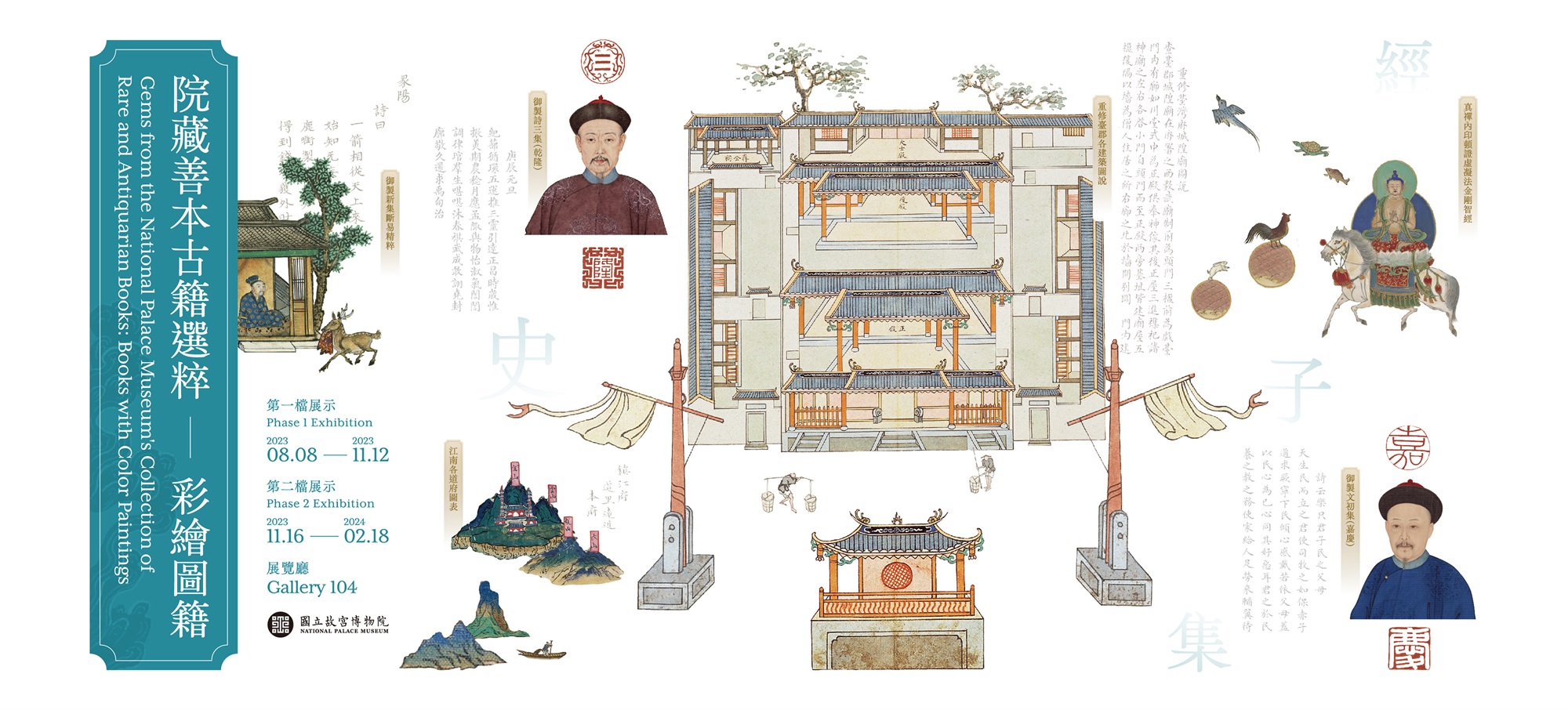Literary Works of the Qing Emperors
Literary Works of the Qing Emperors: The Qianlong and Jiaqing Anthologies of Prose and Poetry
Prose and poetry by imperial rulers are of particular note due to the special status of their authors. And the NPM, famous for its holdings of Qing dynasty court books, features a large collection of prose and poetry anthologies by eight Qing rulers (all except the last emperor, Dezong). However, those with portrait paintings of emperors are only found for the father-and-son pair Qianlong and Jiaqing (r. 1796-1820).
There are seven small round portraits as frontispiece illustrations for the imperial poetry and prose collections of the Qianlong emperor, whose age in which goes from a more youthful appearance to an older one. The styles of the portraits also slightly differ. The facial features in the first, second, and third anthologies of poetry are more three-dimensional, while the other four (the first and second anthologies of prose and the fourth and fifth anthologies of poetry) reveal more traditional outlining techniques. For the Jiaqing emperor, there are five small round portraits for his poetry (the first and second anthologies), prose (the first and second anthologies), and Weiyu shuwu quanji dingben (Final Complete Anthology of the Weiyu Study), the paintings also indicating somewhat his progression in age.
According to research, this format of including a small imperial portrait at the beginning of a book most likely was influenced by the tradition of fine portraiture in the West, the application of which was not restricted to the front of imperial collections of poetry and prose. According to the classical four-type classification of Chinese books, imperial collections of prose and poetry were included in the anthologies category.
-
Yuzhi Shi Sanji
Anthology of Imperial Poetry,Third Set
Written by Emperor Qianlong, compiled by Yu Minzhong and others, Qing dynasty
Qing court manuscript in black-lined columns, Qianlong reign(1736-1795)Imperial Poetry written by Emperor Qianlong
Emperor Qianlong claimed that he liked to write poems since he was little, and once said that “All important matters of the people and country are often found in poems.” After he ascended the throne, he consented to the request of his courtiers to compile poems every 12 years. The first, second, third, fourth, and fifth poem sets contain 4,166; 8,484; 11,519; 9,902; and 7,729 poems, respectively, totaling an astonishing 41,800 poems. More impressively, this number does not include the Yuji that he wrote (which Emperor Jiaqing later edited) before his ascension. The title page of the “Imperial Poetry” exhibited here is painted with a small portrait of Emperor Qianlong, allowing readers to see the emperor’s face. -
Yuzhiwen Chuji
Imperial Literature,First Set
Written by Emperor Jiaqing, compiled by Qing Gui and others, Qing dynasty
Qing court manuscript in black-lined columns, the 10th year of Jiaqing reign(1805)In 1805, grand scholars Qinggui and others submitted a palace memorial to Emperor Jiaqing asking his permission for them to compile and publish the various styles of writings that he had created after ascending the throne. Although the emperor modestly replied by saying that he was not a capable writer, and that he had been too occupied with government affairs that he had no time to write calligraphy (only over 60 pieces were written over a period of 10 years). However, considering that the pieces written were all for the purpose of serving the government and people, he consented to their request, giving birth to Yuzhiwen Chuji. In 1815, grand scholar Dong Gao and others submitted a palace memorial to the emperor asking his permission for them to continue to compile and publish Yuzhiwen Erji to educate the public. The emperor granted the request. There are more than 100 articles in Yuzhiwen Erji. Both the Yuzhiwen Chuji and Yuzhiwen Erji were written in black-lined columns, and their title pages contain a small portrait of the emperor.


